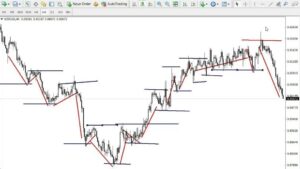Contents:
To support these theories, Keynesians typically traced the logical foundations of their model and supported their assumptions with statistical evidence. New classical theorists demanded that macroeconomics be grounded on the same foundations as microeconomic theory, profit-maximizing firms and rational, utility-maximizing consumers. Prior to Keynes, a situation in which aggregate demand for goods and services did not meet supply was referred to by classical economists as a general glut, although there was disagreement among them as to whether a general glut was possible. Keynes argued that when a glut occurred, it was the over-reaction of producers and the laying off of workers that led to a fall in demand and perpetuated the problem. Keynesians therefore advocate an active stabilization policy to reduce the amplitude of the business cycle, which they rank among the most serious of economic problems. According to the theory, government spending can be used to increase aggregate demand, thus increasing economic activity, reducing unemployment and deflation.
The book had a profound impact on economic thought, and ever since it was published there has been debate over its meaning. Later the same year, speaking in a newly created Committee of Economists, Keynes tried to use Kahn’s emerging multiplier theory to argue for public works, “but Pigou’s and Henderson’s objections ensured that there was no sign of this in the final product”. In 1933 he gave wider publicity to his support for Kahn’s multiplier in a series of articles titled “The road to prosperity” in The Times newspaper.
The multiplier is, therefore, the ratio of increment in income to the increment in investment. If ∆I stands for increment in investment and ∆Y stands for the resultant increase in income, then multiplier is equal to the ratio of increment in income (∆K) to the increment in investment (∆I). Moreover, Keynes’s vague determination of aggregate demand and supply curve can be confusing and subsequently has been the cause for much more confusion in his followers’ interpretations [5, p. 67; 10, 25.
10 Therefore, efforts by the monetary authority to stabilize the short-period fluctuations of the economy are futile for two reasons. First, any drastic changes that the monetary authority makes in the short-term interest rate simply cause a more steeply sloped yield curve as ra reaches the limits of its variability around rs. Second, such drastic changes in the short-term interest rate threaten to shatter the confidence of investors in their calculations of Ea.

Keynes treated investment as autonomous of income and we will here follow him. 10.2 that saving and investment curves intersect at point E, that is, planned saving and planned investment are in equilibrium at the level of income OY1Thus, with the given saving and investment curves level of income equal to OY1 is determined. Unfortunately, Keynes did not determinate exactly the effective demand neither by assumptions, nor by graphical or mathematical expressions.
As a corollary to the above, when there are fluctuations in the level of income and employment due to variations in the rate of investment, the multiplier process throws a spotlight on the different phases of the trade cycle. Taxation policy is also an important factor in weakening the multiplier process. Progressive taxes have the effect of lowering the disposable income of the taxpayers and reducing their consumption expenditure. Similarly commodity taxation tends to raise the prices of goods, and a part of increased income may be dissipated on higher prices.
Most importantly, it depends on what the central bank is targeting. If the central bank is targeting a fixed rate of interest (no central bank in its right mind would do this, but let’s just suppose), the money multiplier is infinite. Just like the keynesian multiplier in New Keynesian models. Beginning in the late 1950s new classical macroeconomists began to disagree with the methodology employed by Keynes and his successors. Keynesians emphasized the dependence of consumption on disposable income and, also, of investment on current profits and current cash flow. In addition, Keynesians posited a Phillips curve that tied nominal wage inflation to unemployment rate.
The Fatal Flaw of the Keynesian Multiplier Theory
Secondly, the rise in price level reduces the supply of real money balances (Ms/P) that causes a shift in money supply curve to the left. Therefore, when income and demand increase as a result of increase in investment, it generally raises the prices of these goods rather than their output and therefore weakens the working of the multiplier in real terms. Thus, it was often asserted in the past that Keynesian theory of multiplier was not very much relevant to the conditions of developing countries like India.
- On 7 March 1931, in the New Statesman and Nation, he wrote an article entitled Proposal for a Tariff Revenue.
- Modern economists are far from united on the validity of either Kahn’s or Keynes’ work.
- When the ratios of the marginal utility to the price of goods are unequal, utility is at a maximum for those goods.
- Changes in government spending have a similar impact on equilibrium GDP as changes in investment.
It is crucial because, as it was mentioned above, a number of authors have stated that Keynes is not among Walras’s followers [1, p. 188; 6, p. 110; 10,15,18,22,23, p. 69; 26]. Moreover, Keynes, himself, remarked, let us to repeat, that “Walras’s theory and all others along those lines are little better than nonsense”, [4, p. 615]. Of course, to analyze the economic impact of food stamps, you would also need to consider the marginal propensities to consume and save of the taxpayer versus those of the recipients. Of course, again, there is more to a decision about food stamps that their overall economic impact. I assume that the charitable argument for food stamps would trump economic arguments. Proponents of food stamps pointing to multipliers aren’t making their best arguments.
A mainly Canadian economics blog
Moreover, investment is determinant, which is opposite Keynes’s statement “Saving and Investment are determinates’, in the first phase of the whole investment process which Keynes considered. However, the theory of causality teaches that such a replacement is generally incorrect and yields inadequate results . The main argument of Keynes’s theory is that ‘when the genuine income of the community increases or decreases, its consumption will increase or decrease but not so fast’ [25, p. 114]. From this we can conclude that income is equivalent to the cause and consumption, as well as the saving , is equivalent to effect.

For example, a decrease in aggregate spending can bring the economy into a recession. However, the negative impact of private decision-making can be mitigated through government intervention with a fiscal or monetary stimulus. It has been estimated that taking into account all leakages in the multiplier process, the value of the multiplier was around 2 during the period. Therefore, as a result of sharp decline in investment by $ 47.5 billion and consequently operation of the multiplier in the reverse there was a fall in the induced consumption expenditure. The public investment in public works such as road building, construction of hospitals, schools, irrigation facilities will raise aggregate demand by a multiple amount. The multiple increase in income and demand will also encourage the increase in private investment.
What Is the Keynesian Multiplier, Formula, and How to Use It?
One flaw is ignoring how governments finance spending by taxation or through debt issues. Raising taxes takes the same or more out of the economy as saving, while raising funds by bonds causes the government to go the keynesian multiplier is simply the reciprocal of the in debt. The growth of debt becomes a powerful incentive for the government to raise taxes or inflate the currency to pay it off, thus lowering the purchasing power of each dollar that the workers are earning.

He also criticised the static dimension of the theory of comparative advantage, which, in his view, by fixing comparative advantages definitively, led in practice to a waste of national resources. In January 1930, in the Economic Advisory Council, Keynes proposed the introduction of a system of protection to reduce imports. In the autumn of 1930, he proposed a uniform tariff of 10% on all imports and subsidies of the same rate for all exports. In the Treatise on Money, published in the autumn https://1investing.in/ of 1930, he took up the idea of tariffs or other trade restrictions with the aim of reducing the volume of imports and rebalancing the balance of trade. At the beginning of his career, Keynes was an economist close to Alfred Marshall, deeply convinced of the benefits of free trade. From the crisis of 1929 onwards, noting the commitment of the British authorities to defend the gold parity of the pound sterling and the rigidity of nominal wages, he gradually adhered to protectionist measures.
Keynes (1936, pp. 202, 206 and 313–320), the short-period fluctuations of ra around rs are strictly limited to ‘the difference between the squares’. In short, Keynes formulates equation in such a way that it is only by bearing some risk of loss that potential investors can expect to profit. The multiplier is an important tool in the hands of modern states in formulating economic policies.
The Dynamic or Period Multiplier:
To make the model more realistic, we can easily add NX to the equation. An increase in exports over imports will increase aggregate output Y by the increase in NX times the expenditure multiplier. Likewise, an increase in imports over exports will decrease Y by the decrease in NX times the multiplier. The Keynesian multiplier is an economic theory that states that spending generates more spending, ultimately to the benefit of the economy as a whole. The theory was proposed by economist Richard Kahn in the 1930s, as an integral component of John Maynard Keynes’ more sweeping work, The General Theory of Employment, Interest and Money.
Fundamental Errors in Keynesian Multiplier Theory and Cross Diagrams
Thus “the timeless multiplier analysis disregards the transition and deals only with the new equilibrium income level” and is, therefore, unrealistic. On the contrary, in periods of overfull employment, a decline in investment will have a serious effect on the levels of income and employment where the MPS is high . The best policy is to reduce investment where the MPC is low , to have gradual decline in income and employment. A fall in investment leads to a cumulative decline in income and employment by the multiplier process and vice versa.
The concept of the change in aggregate demand was used to develop the Keynesian multiplier. It says that the output in the economy is a multiple of the increase or decrease in spending. If the fiscal multiplier is greater than 1, then a $1 increase in spending will increase the total output by a value greater than $1.
A Keynesian cross diagram is a graph with aggregate demand on the vertical axis and aggregate output on the horizontal. When G is used to increase output, it is called anti-unemployment policy and when G is used to decrease output it is called anti-inflationary policy. In the Lesson on Fiscal Policy, we will show how both government spending and taxes can be used to expand or contract the economy. It should also be stated that the investment multiplier can be shown in terms of the MPS.
